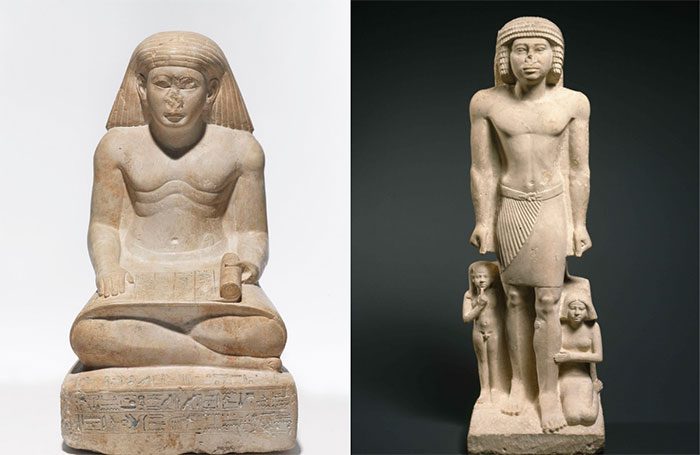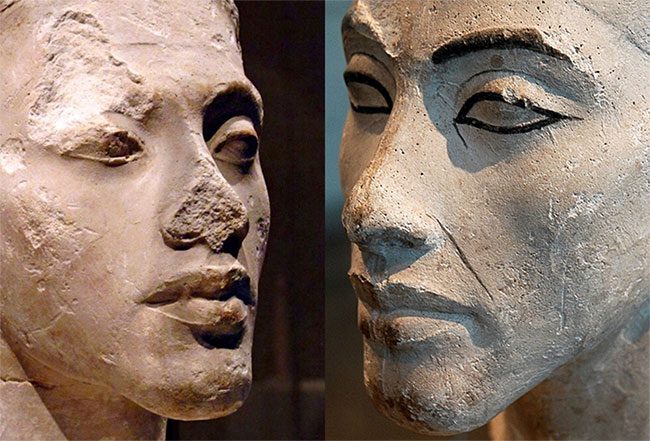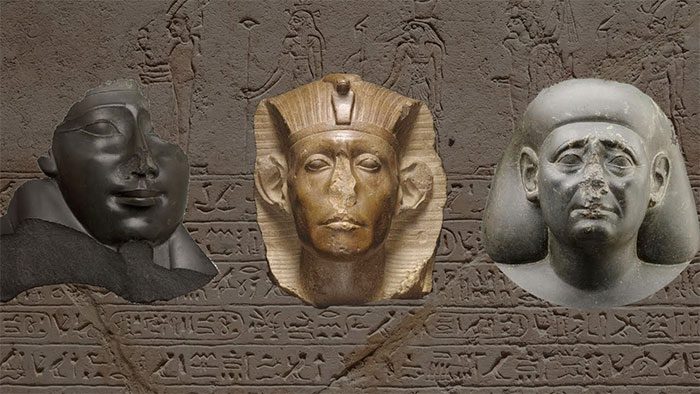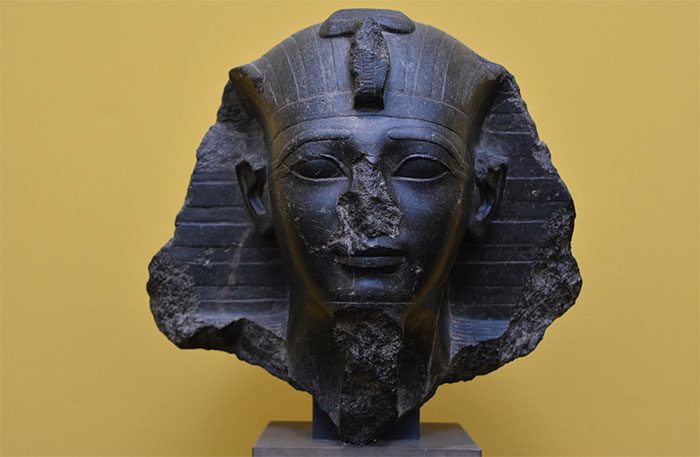This mystery has puzzled archaeologists and history enthusiasts for decades.
In the world of ancient Egypt, statues were an integral part of their culture. However, these statues share a peculiar pattern, as if they were collectively cursed—all of them have broken noses.
Many statues, when discovered, are in remarkably perfect condition, yet inexplicably show signs of decay shortly afterward, particularly in one specific area: the nose. Why is this the case?

While time and relocation could be a reasonable explanation for the noses of three-dimensional works to break, it is difficult to understand why the noses of flat artworks are also damaged. (Photo: Zhihu).
Many consider this a “masterpiece” of European colonialism. It is said that the noses of the statues were smashed to eradicate representations that originated from Africa; Africans have distinctive noses that are characteristic of them. However, this theory is completely unfounded and lacks supporting evidence.
Historians have dismissed this idea by pointing out logical fallacies. Simply put, even if the nose is broken, other features of the statue can still relate to their African origins, and no other features are damaged on the statue.
Although colonialism has brought horrors to the world, breaking the noses of ancient Egyptian statues certainly isn’t one of them.

Ancient Egyptians carved countless statues of pharaohs, religious figures, and the wealthy. Despite depicting various characters, many of these statues share a common trait: broken noses. This feature is so prevalent that it raises the question—was this the result of unintentional accidents, or is there something deeper? (Photo: ZME).
Knowing that Europeans are not behind this mystery, many have speculated that it could be the result of natural erosion. This hypothesis seems relatively reasonable as the noses of the statues are indeed very fragile. They protrude from the statue’s face and are most affected by the air. After research, archaeologists have also identified many similar cases, confirming that natural factors like erosion are responsible for the missing parts of the statue’s face/body.
However, this leads to the conclusion that the nose is not the only target of erosion; areas like the cheeks or the body of the statue would also sustain damage.
Thus, it is clearly inaccurate to claim that these statues only have broken noses due to natural causes. Considering that most of these statues are housed indoors, where they are not exposed to weather elements, this hypothesis becomes even less convincing. Is there another reason?

Ancient Egyptians believed that the spirit of a deity could reside in an image or statue representing that god. The intentional destruction of the statue’s nose is thought to be aimed at neutralizing the power of that image or statue. (Photo: Zhihu).
When discussing Egyptian history in academic circles, the most promoted theories are iconoclasm and the ancient Egyptians’ belief in the supernatural. Ancient Egypt is renowned for its strict religious rituals, with ancient Egyptians believing that an individual’s life after death could be preserved in statues. While they knew that statues could not move, they believed that the lifeforce of a person upon death would transfer into their corresponding statues, almost as if they were alive. To effectively eliminate this lifeforce, the Egyptians believed they had to destroy the statue.
Thus, it is speculated that grave robbers of nobles and pharaohs would first break the noses of the statues to effectively remove this lifeforce, ensuring the statue could no longer “breathe.” It may sound absurd to think that statues could breathe, but the Egyptians firmly believed that the nose was the source of life for the deceased, and breaking it was the only way to kill them once and for all. This hypothesis could explain why so many statues found in pyramids have damaged noses without any signs of natural erosion.

(Illustrative image: Zhihu).
Although the religious beliefs of the ancient Egyptians are thought to be the reason for the broken noses of statues, there may also be political reasons for the destruction of these statues.
In the world of ancient Egypt, previous dynasties before the current ruler were often looked down upon and considered inferior. To reinforce the status of their dynasty as a superior one, most rulers would destroy the statues of former pharaohs and rulers.
They would often smash entire statues into many pieces or sever their arms and legs. In ancient Egypt, this represented support for the current ruler and hatred for the previous ruling class. This act was often seen as a form of propaganda, potentially used to tarnish the reputation of former pharaohs and nobles to glorify the current pharaoh.


















































